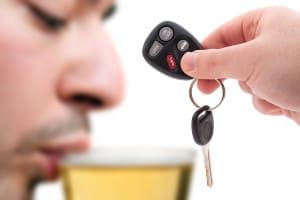 If you have to ask yourself if you’re too drunk to drive, you probably are. Blood alcohol concentration (BAC) is the measurement used to determine if you are legally intoxicated, and if you are at .08 percent or above, you’ll have to face a judge and the consequences for your actions. According to Oklahoma law, a first-offense DWI with a BAC of .08 is a misdemeanor that requires a lengthy license suspension, high fines and possible jail time. But, for those who are convicted with a BAC of .15 or higher, even if it’s only their first offense, they will also have an 18-month car breathalyzer or ignition interlock requirement to fulfill.
If you have to ask yourself if you’re too drunk to drive, you probably are. Blood alcohol concentration (BAC) is the measurement used to determine if you are legally intoxicated, and if you are at .08 percent or above, you’ll have to face a judge and the consequences for your actions. According to Oklahoma law, a first-offense DWI with a BAC of .08 is a misdemeanor that requires a lengthy license suspension, high fines and possible jail time. But, for those who are convicted with a BAC of .15 or higher, even if it’s only their first offense, they will also have an 18-month car breathalyzer or ignition interlock requirement to fulfill.
A person who is convicted of a DWI with a high BAC is dangerous for several reasons. Obviously, that BAC means they’re well beyond any ability to safely drive, but it could also indicate a problem with binge drinking or habitually drinking and driving. Since it is estimated that any person convicted of DWI has already driven while intoxicated 80 times previously, it is important that once a person has been convicted at a high BAC level, they are given help to change behaviors, such as substance abuse counseling and an ignition interlock device.
In terms of BAC, once a person reaches around .12 percent, their blood is comprised of over 1% alcohol. They could be violent, unpredictable and unable to judge their own level of intoxication, leading to the belief that they are still okay to drive. At .15 percent, the impairment only increases the risks on the roads, and despite any assurance of sobriety, remember they are at almost twice the legal limit for intoxication. Oklahoma’s DWI law states that even if it’s your first DWI, you will pay steep consequences for your actions, and especially if you also have a steep BAC level. You’ve certainly “earned” that ignition interlock device, but, was it really worth the risks taken to get there?

 Florida, Ignition Interlocks, and Your Other Home State
Florida, Ignition Interlocks, and Your Other Home State